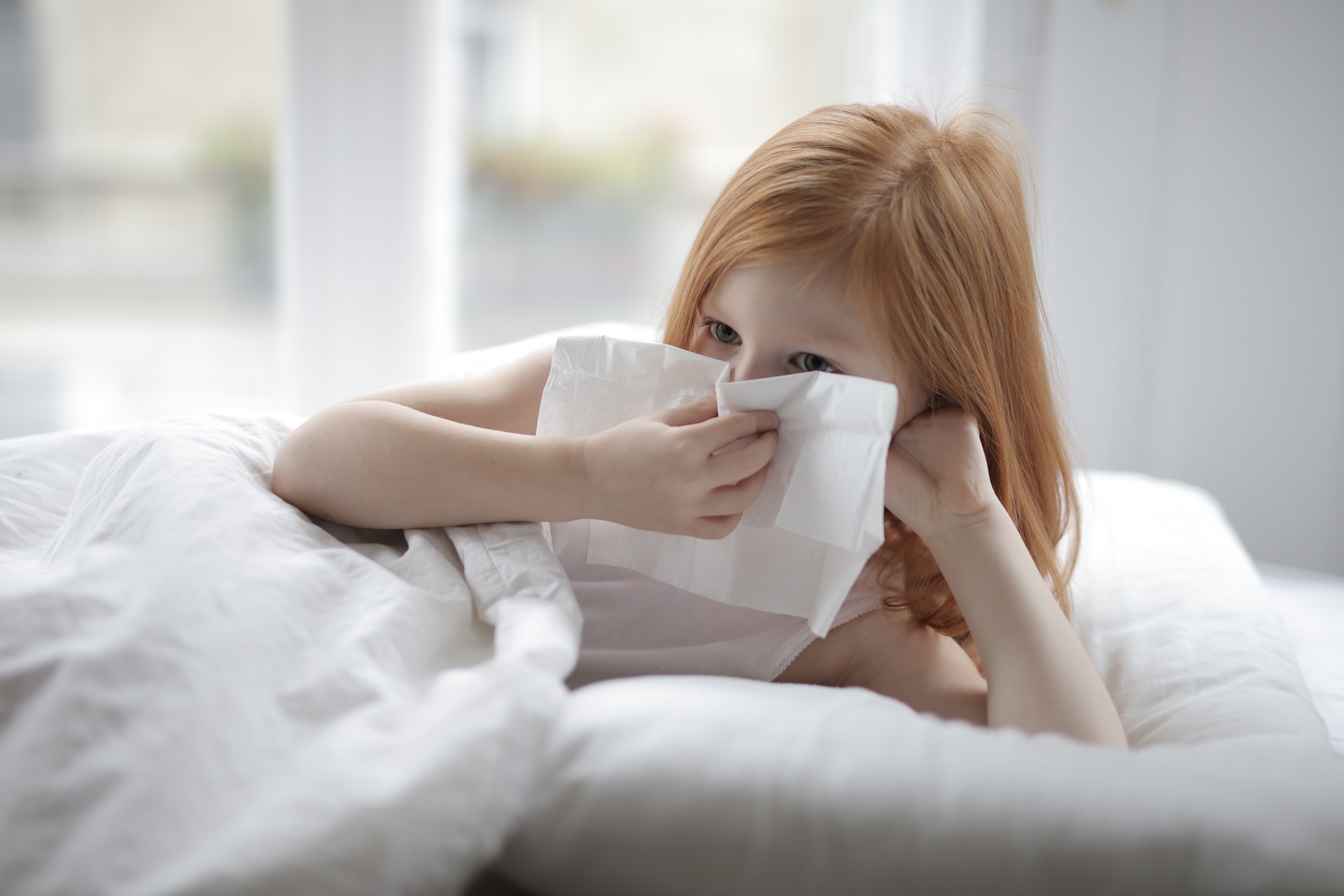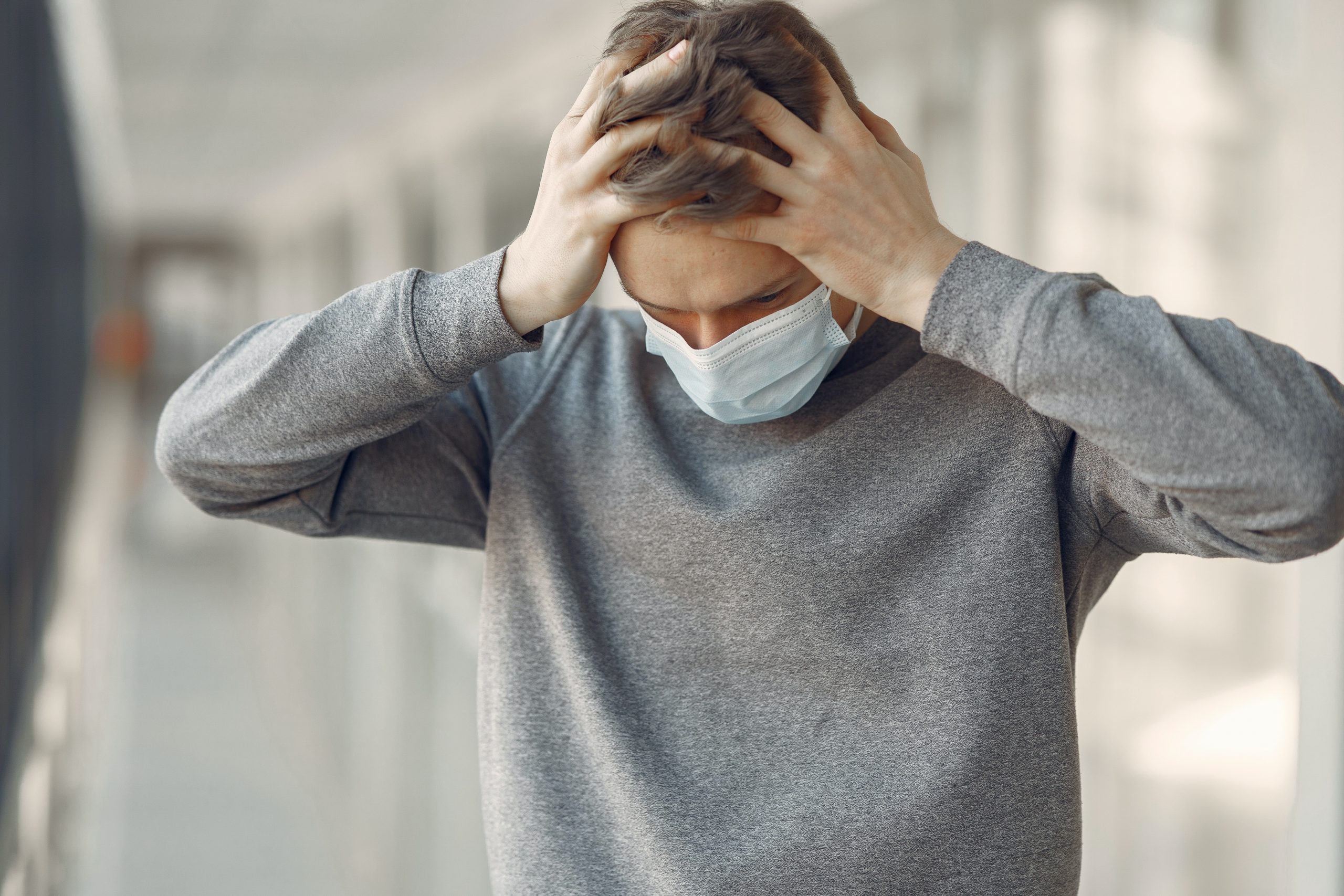Symptom Breakdown: Cold vs. Flu vs. COVID-19 vs. Pneumonia
In today’s world, a little sneeze or cough is enough to warrant hardcore side-eye from everyone within a 6-foot radius (and beyond). “It’s just allergies!” you say to alleviate everyone’s anxiety, but the truth is, you don’t know. And that’s scary. Amid a pandemic, respiratory illnesses can’t be self-diagnosed with a quick “cold vs. flu” Google search.
Coronavirus (COVID-19) has made things complicated. In more ways than one!
Now, you’ve got to have a decent understanding of your symptoms in order to call your doctor’s office and move forward with an official diagnosis (or testing).
And when you suspect any type of respiratory illness – even if it is just a cold! – it’s hard to not know for certain what’s happening in your body.
To make that initial doctor’s call a little easier, consider the symptoms of common respiratory illnesses: the common cold, influenza, Coronavirus, and pneumonia. Then, rest assured knowing how long each should last and how to prevent another case of whatever it is you’re experiencing!
Let’s Compare: Cold vs. Flu vs. COVID-19 vs. Pneumonia
You are waaaay more likely to contract a cold than the flu, COVID-19, or pneumonia. In fact, you’ll probably have at least a couple of colds this year! The other illnesses follow suit, with flu being the next most likely to affect you, and COVID-19 and pneumonia neck-and-neck for the third and fourth most likely.
When you’re scratching your head wondering about the differences between a cold vs. flu vs. COVID-19 vs. pneumonia, simply refer back to this list!
Common Cold
Most Americans are no stranger to the common cold. In fact, adults experience an average of 2-3 colds per year, while pre-school age children can expect 5-7 annually. Although they are most prevalent in the spring and winter, you can get a cold at any time of the year.
Prevalence & Deaths: A 2020 poll of 1,500 Americans revealed that as many as 88% of adults ages 18-30 caught at least one cold in the past year. Annual deaths are nominal, with 18,000 cold-related deaths occurring since 1979.
Prevention: Wash hands often with soap and water, avoid touching your face, and stay away from people who are sick. If you have a cold, stay home. When you must be around other people, be sure to step away before coughing or sneezing, do so into a tissue that you throw away, and wash your hands after.
Symptoms: You’re more likely to have a runny or stuffy nose with a cold than with the flu. You can also expect these common symptoms:
- Sore throat
- Runny nose
- Coughing
- Sneezing
- Headaches
- Body aches
Duration: 7-10 days
When to call the doctor: You generally don’t need to see a doctor for treatment of a common cold. However, if you fall into one of these categories, you’ll want to pick up the phone.
- You have symptoms that last more than 10 days
- Your symptoms are severe or unusual
- Your child is younger than 3 months old and has a fever or is lethargic
- You are at high risk for serious flu complications and get flu symptoms such as fever, chills, and muscle or body aches. People at high risk for flu complications include children younger than 5 years old, adults 65 years and older, pregnant women, and people with medical conditions such as asthma, diabetes, and heart disease.

Influenza A or B
It’s easy to tell when flu season has arrived – everyone seems to be coughing, kids miss school, and productivity plummets in the office.
Because it’s more prevalent (and intense) than the common cold, the flu generates lots of myths. We’ll bust one for you right here – you can’t get the flu from the influenza vaccine. This is good news in general, and especially amid a COVID-19 pandemic when a flu shot is especially critical.
It’s tough to distinguish between cold vs. flu, but typically, flu symptoms are worse. The flu also comes on suddenly, with the symptoms below appearing suddenly and in full effect.
Prevalence & Deaths: About 3% – 11% of Americans get the flu each year and around 50,000 may die from flu-related illness annually (that’s a rate of .02%)
Prevention: Flu prevention is critical in the workplace and schools, and it all starts with getting vaccinated (there are lots of reasons to get a flu shot!). Aside from vaccination, you can prevent the flu from spreading by staying away from people who are sick, washing your hands regularly, avoiding contact with your face, and covering coughs and sneezes.
Symptoms: They’ll come on quickly and feel worse than a common cold. If you experience the following symptoms, you may have the flu:
- Fever or feeling feverish/chills (not everyone with the flu will experience a fever)
- Cough
- Sore throat
- Runny or stuffy nose
- Muscle or body aches
- Headaches
- Fatigue
- Some people may experience vomiting and diarrhea, though this is more common in children
Duration: 3-7 days
When to call the doctor: Like a cold, the flu will generally clear itself up without assistance from a doctor. However, you should be sure to get doc on the line if you experience these issues:
- Your fever gets better, then suddenly worsens
- Your symptoms don’t improve within two weeks
- You can’t get rid of your cough or your cough begins producing thick mucus
Coronavirus (COVID-19)
Ahhh, Coronavirus. This is the respiratory infection we’re all hoping not to get. And if you’ve had it (or heard stories of those who have), you know there’s a good reason why.
The respiratory disease is spreading quickly and has taken the lives of thousands of Americans. While the majority of people who get it survive, they have described COVID-19 symptoms as worse than the flu — which, yes, are generally worse than a common cold.
Prevalence & Deaths: Data for COVID-19 is still new and may fluctuate in the coming years. As of mid-December 2020, over 15 million Americans have tested positive for COVID-19 (1.9% have died).
Prevention: If you have or suspect you may have coronavirus, it is absolutely critical that you stay home. Additionally, the CDC recommends facial coverings that enclose the nose and mouth for the best chances of preventing the spread of COVID-19. They also recommend keeping a safe distance (at least 6 feet) from all people outside your family, as well as frequent hand washing and not touching your face.
Symptoms: They may occur 2-14 days after exposure to the virus. If you experience the symptoms below, you may have COVID-19:
- Fever or chills
- Cough
- Shortness of breath or difficulty breathing
- Fatigue
- Muscle or body aches
- Headache
- New loss of taste or smell
- Sore throat
- Congestion or runny nose
- Nausea or vomiting
- Diarrhea
Duration: About 2 weeks in mild to moderate cases and 3 to 6 weeks in more severe circumstances.
When to call the doctor: If you suspect you may have coronavirus, call your doctor to discuss next steps. It is critical that you call first. If you any of the following apply to you, get to a hospital immediately:
- Trouble breathing
- Persistent pain or pressure in the chest
- New confusion
- Inability to wake or stay awake
- Bluish lips or face

Pneumonia
It may alleviate some fears to know that pneumonia and COVID-19 share similar prevalence rates. We hear a lot about COVID-19 right now since it’s a new, fast-paced disease. Thanks to safety precautions like facial coverings and social distancing, coronavirus is infecting people about as often as you hear about someone getting pneumonia.
Prevalence & Deaths: Community-acquired pneumonia (which essentially translates to “not contracted at a hospital”) infects about 5.6 million Americans each year – a rate of 1.7%. Similar to the flu, about 50,000 Americans (.02%) die from pneumonia-related complications.
Prevention: In addition to getting vaccinated you can prevent the illness by washing hands regularly, limiting contact with cigarette smoke, and managing/preventing conditions like diabetes. Additionally, disinfect surfaces that are touched often and cough or sneeze into a tissue that you throw away.
Symptoms: Most cases of community-acquired pneumonia are caused by bacteria and mild cases (called “walking pneumonia) may be similar to a cold. Viruses are the second most common cause of pneumonia and produce symptoms similar to the flu.
Symptoms of bacterial pneumonia:
- A cough that brings up mucus
- Fever over 100.4 F
- Fast breathing
- Shortness of breath
- Chest pain
- Fatigue
- Note that “walking pneumonia” – a less severe form of bacterial pneumonia – may feel like a cold and produce symptoms like fever, cough, headache, and chills
Symptoms of viral pneumonia:
- Fever
- Chills
- Dry cough, which may get worse and make mucus
- Stuffy nose
- Muscle pain
- Headache
- Tiredness
- Weakness
Duration: People with either type of pneumonia generally recover within 1 to 3 weeks.
When to call the doctor: If you suspect you have pneumonia, you’ll want to call your doctor to discuss treatment, which may include antibiotics if you have bacterial pneumonia. You’ll definitely want to give them a call if you experience any of the following:
- You have a cough that won’t go away
- You experience trouble breathing or shortness of breath
- You have a fever above 102° F
- You experience chest pain
- You have shaking chills
- You suddenly begin to feel worse after having one of the illnesses above
For any of the above illnesses, never hesitate to call your doctor. They’ll be able to give you specific instructions, advice, and next steps based on your symptoms.
If you still need a flu shot, give us a call to get immunized today!